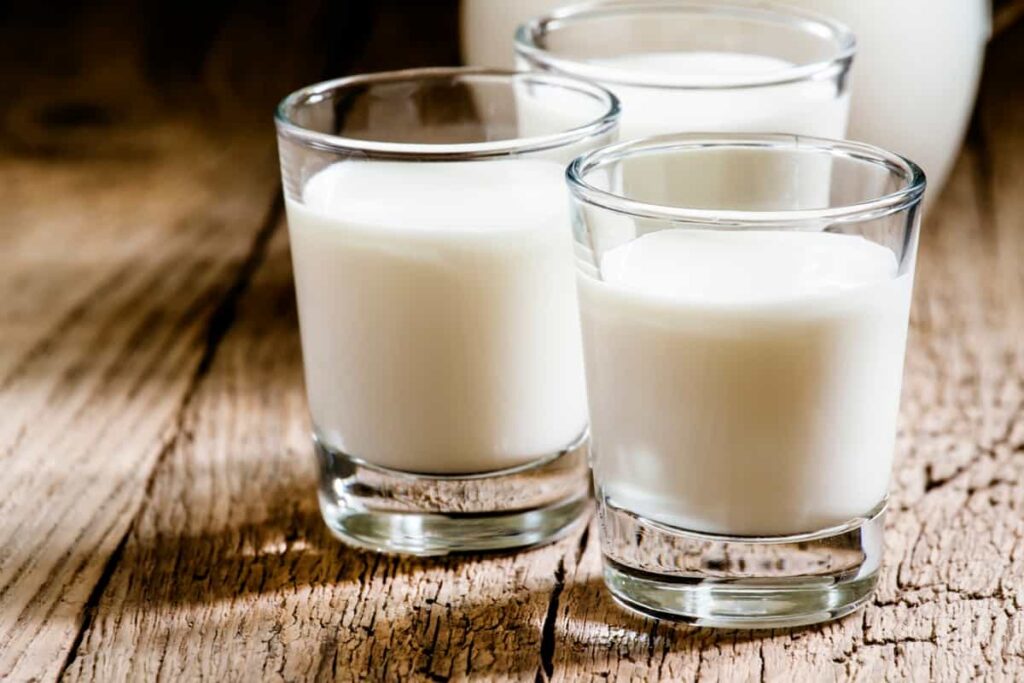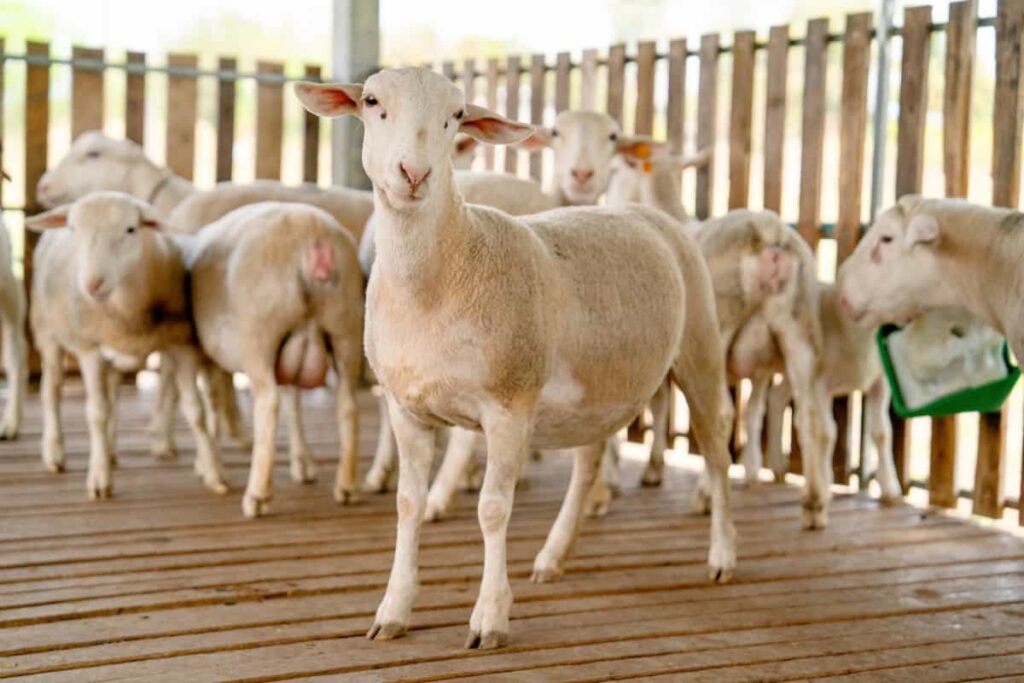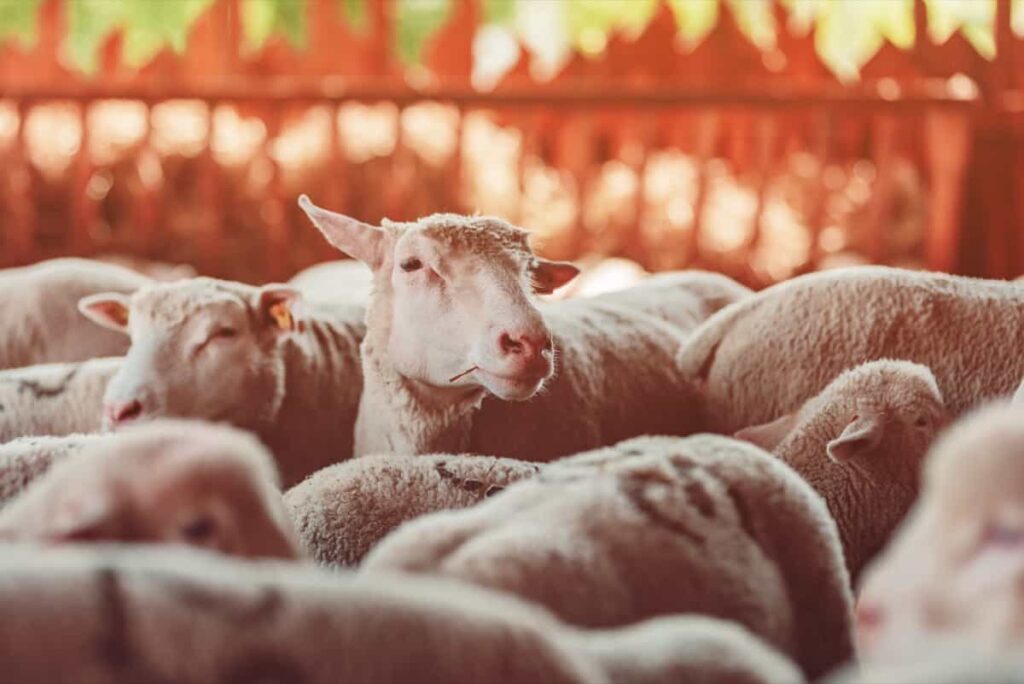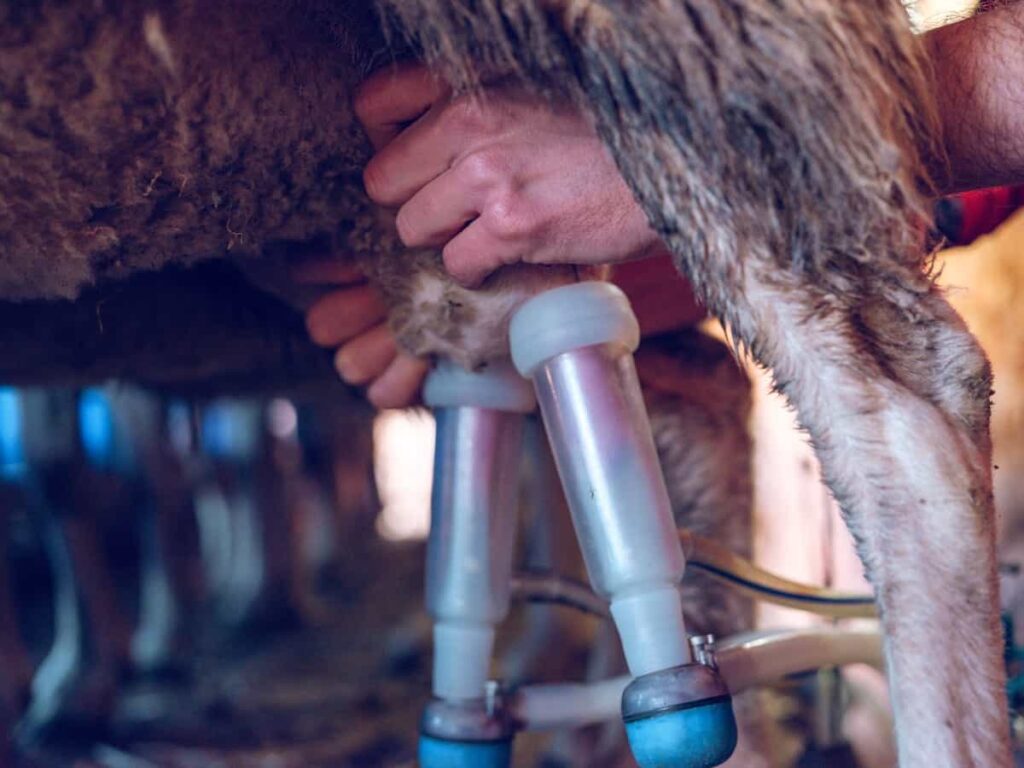Sheep milk production offers numerous advantages, ranging from high nutritional value to excellent cheese-making capabilities. Dairy sheep breeds play a crucial role in producing high-quality sheep milk. As consumer awareness grows and availability increases, there is potential for an expansion in the market demand for this unique dairy product.

Understanding the Lactation Period in Dairy Sheep
The normal lactation period in dairy sheep is 100 days. During this time, female sheep, known as ewes, produce milk for their lambs. This period is crucial for both the nutrition and growth of the lambs. Lactation begins shortly after the birth of a lamb, and milk production gradually increases over the first few weeks. Ewes typically reach peak production around four to six weeks postpartum. After that, milk production declines until it stops at around 100 days.
The duration of lactation can vary slightly depending on factors such as breed, management practices, and individual differences among ewes. During this period, it’s essential to provide proper care and nutrition to ensure optimal milk production and health for both mother and lamb. Regular milking sessions should be conducted to stimulate continued milk flow while also preventing issues like mastitis.
The Uses of Sheep Milk in Various Industries
Sheep milk is a versatile ingredient that finds its way into several industries thanks to its unique properties and rich nutritional composition. In the culinary world, sheep milk is highly sought for its creamy texture and distinct flavor. It is used in producing artisan cheeses known for their complex taste profiles. Beyond cheese, sheep milk also plays a significant role in the cosmetics industry.
Its high fat content makes it an excellent ingredient for moisturizers, body lotions, and even soaps. Sheep milk’s benefits extend to the field of medicine as well. Research has shown that certain components of sheep milk have antimicrobial properties, making it useful in developing antibacterial creams or ointments.
Health Advantages and Nutritional Value of Sheep Milk Consumption
One of the main advantages is that sheep milk contains higher fat and protein levels than cow’s milk, making it a nutrient-dense option. Another benefit of sheep milk is its rich calcium content. Calcium is crucial in maintaining strong bones and teeth, and sheep milk provides an excellent source of this essential mineral. Additionally, sheep milk contains more vitamins A and E than other dairy products.
In case you missed it: Karnataka Sheep Farming: A Comprehensive Guide to Loans and Subsidy

These vitamins contribute to healthy skin, vision, and immune function. Furthermore, sheep milk is easier to digest than cow’s milk due to its smaller fat globules and different protein composition. This makes it a suitable alternative for individuals with lactose intolerance or digestive issues. It contains higher vitamin levels than cow or goat milk. It also provides significant amounts of riboflavin, supporting energy production within our cells.
Factors Affecting the Price of Sheep Milk
One factor is the limited supply. Unlike cows or goats, sheep produce less milk per day on average. This means there is not as much sheep milk available. As a result, the demand for sheep milk outweighs its supply, increasing its price. Another factor influencing the price of sheep milk is the labor-intensive nature of dairy farming with sheep. Milking and caring for these animals require more time and effort than cows or goats. The smaller size and more delicate nature of sheep also complicate their management.
Furthermore, the feed cost plays a role in determining the price of sheep milk. High-quality feed is crucial for maintaining healthy and productive ewes. Specialized diets designed specifically for dairy production can be expensive, contributing to higher production costs. Transportation costs can impact pricing as well. Since some breeds known for producing quality sheep milk are native to specific regions or countries, importing these products may incur additional expenses such as shipping fees and customs duties.
Dairy Sheep Breeds and Their Characteristics
The popular dairy sheep breeds are the East Friesian Sheep, Lacaune Sheep, Awassi Sheep, Icelandic Sheep, and Assaf Sheep. The East Friesian Sheep is known for its exceptional milk production capacity. It produces high butterfat content in its milk, making it good for cheese and yogurt production. With an average lactation period of 180-200 days, these sheep can produce up to 1,000 liters of milk per year.
The Lacaune Sheep is another breed that excels in the quantity of milk produced. Its milk has a rich flavor profile, making it suitable for various dairy products. On the other hand, the Awassi Sheep is renowned for its adaptability to harsh climates and ability to thrive on limited resources. Its milk contains high protein content, making it perfect for producing specialty cheeses.
Icelandic Sheep are hardy animals that can withstand extreme weather conditions. Their milk has a unique taste due to the diverse vegetation they graze on throughout the year. Assaf Sheep originate from Israel and have gained popularity worldwide due to their impressive milking abilities. They produce large quantities of creamy and flavorful milk suitable for various dairy products.
In case you missed it: Dairy Sheep Farming: Raising from Scratch for Breeding to Marketing

Best Practices for Sheep Milk Production
- Proper nutrition: Providing a balanced diet is crucial for optimal milk production. Sheep should have access to fresh pasture, high-quality hay, and supplemental grains and minerals.
- Hygiene and cleanliness: Maintaining a hygienic milking environment is vital in preventing contamination and maintaining milk quality. Regularly clean and sanitize milking equipment, ensure proper udder hygiene, and practice good personal hygiene.
- Milking technique: Gentle handling of sheep during milking helps reduce stress levels, resulting in better milk flow. Use a secure yet comfortable milking parlor or system that allows easy access to each ewe’s udder.
- Monitoring health: Regular health checks on the flock can help detect any issues early on. Look out for signs of mastitis or other diseases that could affect the quality of the milk.
Nutritional Composition of Sheep Milk
Sheep milk is delicious and packed with nutrients contribute to overall health and well-being. Its composition sets it apart from other types of milk, making it a valuable option for those seeking alternative dairy products. One main feature of sheep milk is its higher fat content than cow or goat milk.
This higher fat content gives sheep milk a rich and creamy texture, perfect for indulging in dairy-based treats like cheese and ice cream. Additionally, the high-fat content makes sheep milk an excellent energy source. In terms of protein, sheep milk contains a good amount, which is easily digestible by our bodies.
Milking Techniques for Dairy Sheep
- Before milking, cleaning the udder and teats thoroughly is important to prevent contamination. This can be done using warm water or a mild disinfectant solution. Additionally, ensuring that the milking equipment is clean and sterilized is crucial.
- The positioning of the sheep during milking plays a significant role in successfully extracting milk. To minimize movement, the sheep should be secured comfortably in a stanchion or holding pen.
- Hand milking is commonly practiced with dairy sheep due to their smaller udders than cows. Gently squeeze each teat from top to bottom, applying consistent pressure but avoiding excessive force.
- In large-scale operations, machine milking may be more practical and time-efficient. Specialized machines designed for small ruminants provide a vacuum system that mimics natural suckling action.
- After milking, it’s essential to promptly store the milk under hygienic conditions at low temperatures (around 4°C) until further processing occurs.
Sheep Milk Processing and Products
After milking, the milk is usually chilled immediately to maintain freshness. Once chilled, it can be further processed into various dairy products. One popular product made from sheep milk is cheese. Sheep milk cheese has a rich and creamy texture with a distinct flavor that differentiates it from cow or goat cheese.
In case you missed it: The Ultimate Guide to Sheep Vaccination Schedule: Deworming Chart/Calendar

Another common product is yogurt. Sheep milk yogurt is high in protein and calcium, making it a nutritious breakfast or snack choice. Butter and ice cream are also made from sheep milk. In addition to these traditional dairy products, there are also innovative uses for sheep milk, such as skincare products like soaps or lotions enriched with its natural moisturizing properties.
Marketing and Distribution of Sheep Milk Products
Producers must employ various strategies to market and distribute sheep milk products effectively. One strategy is establishing partnerships with local retailers and specialty stores catering to health-conscious customers. By partnering with these establishments, producers can ensure their products are easily accessible to the target market.
Another effective marketing approach for sheep milk products is online platforms. Creating an online platform through websites or social media accounts allows producers to reach a wider audience beyond their local area. This provides opportunities for direct sales and collaborations with other businesses in the food industry.
Ensuring proper packaging and storage of sheep milk products is essential for maintaining quality during transportation. Producers should also consider working with reliable logistics companies that handle perishable goods. Additionally, participating in farmers’ markets or food festivals can help increase brand visibility and allow consumers to sample the products. Successful marketing and distribution require creativity, adaptability, and understanding of consumer preferences.
Economic Viability of Sheep Milk Production
Sheep milk production has been gaining popularity in recent years, with more and more people recognizing its unique benefits and delicious taste. The cost of raising dairy sheep can be higher than traditional dairy cows or goats. Sheep require specific care and management practices, including specialized feeding programs and regular health checks. On the other hand, sheep milk is known for its high butterfat content, which makes it perfect for producing premium cheeses and other dairy products.
This allows them to maximize efficiency while reducing individual expenses associated with sheep milk production. Additionally, there is demand for alternative dairy products among consumers looking for healthier options or having dietary restrictions such as lactose intolerance. Sheep milk offers a nutritious alternative with unique flavors that appeal to many individuals seeking something different from traditional cow’s milk.
Future Trends and Innovations in the Dairy Sheep Industry
One such trend is the increased focus on genetic selection to improve milk production and quality in dairy sheep breeds. By selectively breeding animals with desirable traits, farmers can optimize their flocks for higher yields and superior milk composition. Another exciting development is the use of technology in dairy sheep management. Farmers are now utilizing automated milking systems that streamline the process and provide valuable data on individual animal performance.
In case you missed it: How to Start Sustainable Sheep Farming: Benefits and How to Reduce Your Carbon Footprint with Sheep

Additionally, there is a growing demand for specialty sheep milk products such as artisanal cheeses and yogurts. As consumer interest in unique flavors and high-quality ingredients continues to rise, producers are diversifying their product offerings to cater to these preferences. Furthermore, research into alternative uses for sheep milk beyond traditional dairy products shows great potential.
Sheep Milk Production Per Day
Each ewe can produce about 1/2 gallon of milk daily when milking twice daily. However, it’s worth noting that this amount is considerably less compared to goats and cows. While some dairy sheep breeds can produce over 12 gallons of milk daily, they are the exception rather than the norm. This difference in production levels between sheep and other animals is one of the key reasons sheep milk products tend to be pricier.
Despite their lower milk output, dairy sheep provide high-quality milk for various industries. Sheep milk boasts exceptional nutritional value and health benefits due to its rich composition of proteins, fats, vitamins, and minerals. Sheep farmers specializing in dairy production must carefully manage their flock’s lactation cycles and implement best practices for optimal yields.
Sheep Milk Price
Sheep milk, with its unique taste and numerous health benefits, has been gaining popularity among consumers. However, one factor that often raises eyebrows is the price of sheep milk. At an average cost of ₹500 per litre, it is undoubtedly more expensive than cow or goat milk.
Where to Buy Sheep Milk
One way to buy sheep milk is to look for local farms or farmers’ markets specializing in sheep milk production in your area. These farmers often have small-scale operations and are passionate about providing high-quality products directly to consumers. Another way to buy sheep milk is through specialty food stores or gourmet shops. Check out local health food stores or explore online retailers specializing in organic and specialty foods.
The internet offers many options for purchasing almost anything nowadays. Many online platforms offer a variety of dairy products, including sheep milk and its derivatives, such as cheese or yogurt. Remember that availability may change depending on where you live, so be patient while searching for this exclusive product. Exploring different avenues like farms, specialty stores, or online platforms will increase your chances of finding a reliable source for quality sheep milk.
Why is Sheep Milk Not Popular?
Limited Availability: Compared to cow’s milk or even goat’s milk, sheep milk is not as readily available in most parts of the world. The number of dairy sheep farms is considerably smaller, resulting in limited production and distribution.
Lack of Awareness: Many people do not know about the existence or benefits of sheep milk. This niche product’s marketing and promotion efforts have been minimal compared to mainstream dairy options, contributing to its low consumer awareness.
Taste Preference: Sheep milk has a distinct flavor that may not appeal to everyone’s palate. While some enjoy its rich and creamy taste, others find it too strong or gamey compared to cow or goat’s milk.
In case you missed it: 500 Sheep Farming Project Report and Bank Loan in India

Cultural Factors: In certain cultures where sheep farming is less prevalent or where there are cultural preferences for other animal milk, such as cows or camels, sheep milk may not be widely consumed or recognized as a viable option.
Conclusion
Sheep milk production refers to extracting and collecting milk from sheep. Sheep milk production plays a crucial role in the dairy industry, offering a range of benefits and contributing to the diversity of dairy products available. To ensure optimal productivity, the best practices for sheep milking involve maintaining strict hygiene standards during both pre-milking preparation and post-milking procedures (storing/processing). Proper handling keeps bacteria at bay, reduces contamination risks, and maintains product integrity.
- Profitable Village Farming Business Ideas in 2024
- High-Yield Aquaculture: Fast-Growing Fish for Farming
- Effective Fish Pond Construction Techniques for Beginners
- Irrigation and Water Management in Pineapple Farming
- Blossom to Harvest: Mastering Flowering and Pollination in Papaya Farming
- Pig Fattening Essentials: From Selection to Sale for Beginners
- Raising Wagyu Cattle: A Complete Guide for Premium Beef Production
- Soil Types and Their Water Holding Capacity
- Optimizing Irrigation Schedules for Coconut Groves for Enhanced Yield
- Espresso Your Garden: Coffee Grounds for Healthier Acid-Loving Plants
- The Best Soil Mix for Snake Plants: How to Mix Your Own Snake Plant Soil
- Green Thumb Success: Expert Tips for Cultivating Greenhouse Beans All Year Round
- Bloom All Year Round: The Ultimate Guide to Indoor Hyacinth Care
- Eco-Friendly Gardening: How to Make Liquid Fertilizer from Kitchen Waste
- Ultimate Guide to Grow Anise in Pots: Explore Seed Propagation to Harvesting
- Guide to Raising Chester White Pigs: Discover Breed Facts to Growth Management
- Mastering the Elegance: The Ultimate Guide to Weeping Cherry Tree Care, Planting, and Maintenance
- Ultimate Guide to Planting Garlic in Grow Bags: Growing Strategies for Beginners
- How to Fix Spider Plant Leaf-Related Problems: Natural and Organic Remedies
- 10 Reasons Why Your Tulsi Plant is Shedding Leaves: Home Remedies and Solutions
- Optimizing Growth and Yield: The Advantages of Palm Bunch Ash Fertilizer
- Utilizing Neem Oil Extract as a Natural Pesticide for Hydrangea
- From Soil to Harvest: Various Ways in Which Farmers Can Use AI Tools
- Steps to Encourage and Induce Citrus Flowers: A Comprehensive Guide
- How to Fix Snake Plant Leaf-Related Issues: Natural and Organic Remedies
- Transform Your Garden into a Fragrant Oasis with Raat Ki Rani (Night Blooming Jasmine)
- Discover the Ideal Chicken Breeds for Philippine Farms
- How to Create a Poultry Egg Farm Business Plan for Profits
- Grow Lemon Cucumbers Like a Pro: Insider Techniques for Bountiful Yields
- Ultimate Guide to Caring for Your Pink Princess Philodendron: Tips for Thriving Variegation
- Areca Nut Profit Per Acre: Calculating Yield and Cost of Cultivation
- How Kaveri Chicken is Becoming a More Profitable Breed in Indian Backyards
- Transform Your Barn: 9 Steps to Convert a Horse Stall into a Chicken Coop
- Exploring Suffolk Sheep Disadvantages with Limitations and Challenges
- Guide to Solving Potted Lemon Tree Problems: How to Revive Lemon Tree in Containers
- Steps to Encourage Female Pumpkin Flowers: Best Strategies for More Flowers and High Yields
